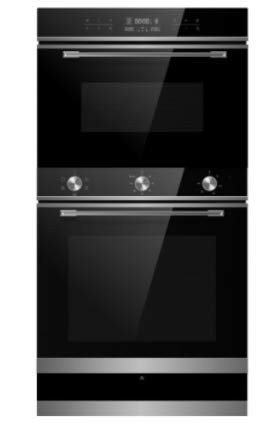Understanding Ovens and Hobs: A Comprehensive Guide
Cooking has actually come a long method since the days of open flames and fundamental cooking methods. Today, ovens and hobs are at the heart of modern-day kitchens, offering flexibility, efficiency, and a selection of cooking options. Whether you are an amateur cook or a skilled chef, comprehending the distinctions, features, and functions of these home appliances is crucial for taking full advantage of culinary potential. This short article breaks down the different kinds of ovens and hobs available on the market, their functionalities, and how to select the right home appliances for your kitchen.
What is an Oven?
An oven is an enclosed space developed for heating and cooking food, providing different methods such as baking, roasting, and broiling. Ovens are available in numerous types, each serving distinct cooking choices and requirements.
Kinds of Ovens
Standard Ovens:
- Use gas or electrical power for heating.
- Generally consist of a heating aspect at the top and bottom.
- Suitable for basic baking jobs.
Convection Ovens:
- Use a fan to flow hot air, promoting even cooking.
- Appropriate for baking, roasting, and reheating.
- Lowers cooking time and improves flavor.
Steam Ovens:
- Utilize steam to cook food while retaining wetness and nutrients.
- Exceptional for health-conscious cooking, such as veggies and fish.
Microwave Ovens:
- Use electro-magnetic radiation to heat food quickly.
- Best for reheating leftovers or cooking easy meals.
Wall Ovens:
- Built into the wall, saving area in the kitchen.
- Available in different configurations, including single or double ovens.
Key Features of Ovens
- Temperature Control: Precision heating for various baking and preparing procedures.
- Self-Cleaning Options: Some models have self-cleaning modes that use heats to burn food residue.
- Smart Features: Wi-Fi connectivity allows remote pre-heating, tracking, and recipe management through smartphones.
What is a Hob?
A hob is a cooking surface, frequently described as a range or cooktop, where pots and pans is positioned for heating. Hobs are readily available in different materials, sizes, and heating methods, accommodating varied cooking requirements.
Kinds of Hobs
Gas Hobs:
- Utilize gas burners for direct flame cooking.
- Offer exact temperature control and are preferred by lots of professional chefs.
Electric Hobs:
- Use electric coils or smooth tops.
- Some designs are equipped with induction innovation, providing rapid heating through electro-magnetic energy.
Induction Hobs:
- Cookware should be made from magnetic products.
- Extremely energy-efficient, supplying fast heat and lowering burn risks.
Ceramic Hobs:
- Feature a glass-ceramic surface with heating aspects below.
- Easy to tidy but can be less energy-efficient than induction hobs.
Key Features of Hobs
- Burner Configuration: Varies from 2 to 6 burners, depending on model and size.
- Power Levels: Multiple settings enable greater precision in cooking.
- Security Features: Options like flame failure devices and child lock settings make sure security during cooking.
Selecting the Right Oven and Hob
Picking the ideal oven and hob for your kitchen involves mindful consideration of numerous factors. Below is a list of questions to direct your choice procedure:
- What is your main cooking style?
- How much kitchen area do you have?
- What is your budget plan?
- Do you prefer gas or electric home appliances?
- Are additional functions like wise connectivity important to you?
Table Summary of Key Differences Between Ovens and Hobs
| Feature | Oven | Hob |
|---|---|---|
| Functions | Baking, roasting, broiling | Boiling, frying, sautéing |
| Cooking Method | Confined heat | Direct cooking surface area |
| Temperature Control | Adjustable settings | Stove settings |
| Types | Electric, gas, convection, microwave | Gas, electric, induction, ceramic |
| Cooking Capacity | Larger (can prepare several dishes) | Smaller (concentrate on immediate cooking) |
| Cleaning | Self-cleaning alternatives offered | Generally manual cleaning needed |
Maintenance Tips for Ovens and Hobs
Proper care and maintenance of your cooking devices extend their life-span and effectiveness. Here are important maintenance tips:
Regular Cleaning:
- Clean the oven interior after each usage to avoid residue buildup.
- Clean down hob surfaces after cooking to avoid stains.
Check Seals:
- Ensure the oven door seals are undamaged to keep energy efficiency.
- Replace damaged gaskets and seals as required.
Examine Burners and Elements:
- For gas hobs, check for clogs in burners.
- For electric hobs, inspect coils and surfaces for indications of wear.
FAQs
Can I utilize any cookware on induction hobs?
- No, induction hobs only deal with magnetic cookware, such as cast iron or stainless steel.
What is the most energy-efficient cooking home appliance?
- Induction hobs are normally the most energy-efficient choice, utilizing less energy than conventional gas or electric models.
How often should I clean my oven?
- It's suggested to clean your oven every couple of months, or more frequently if you use it typically.
Can I install an oven and hob independently?
- Yes, both devices can be installed individually based upon kitchen style and space.
What should I think about when setting up a gas hob?
- Guarantee correct ventilation and follow regional security codes. It is suggested to have an expert set up gas home appliances.
Understanding the functions, types, and upkeep of ovens and hobs can significantly enhance your cooking experiences. Picking Built In Oven On Sale tailored to your cooking design, kitchen area, and safety needs can make all the difference in attaining culinary success. By being informed about your options, you can enjoy a more efficient and satisfying cooking journey, bringing delicious meals to your table with ease.

